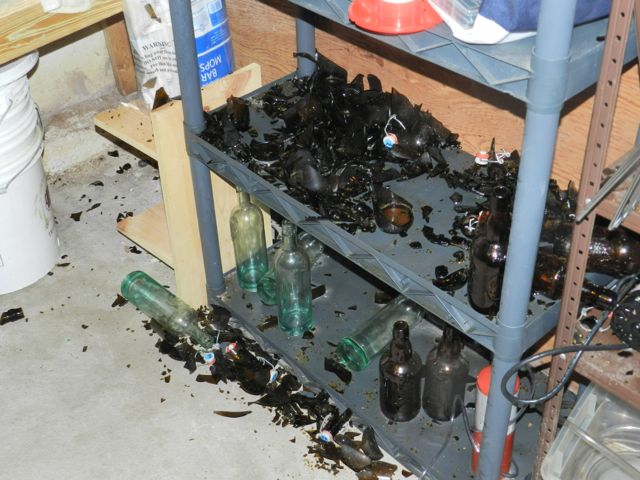Holden Caulfield
Well-Known Member
- Joined
- Apr 21, 2020
- Messages
- 318
- Reaction score
- 337
As home brewing evolves, many past practices for making great beer have been re-evaluated. For example, the need to use a secondary fermentor.
Recently, I read a post from a beginner brewer who was following instruction from his LHBS to check his gravity after a period of time, then check it again 3 days later to confirm no change in FG. This practice exposes their beer to possible infection as well as exposes their beer to a big gulp of oxygen for a minimum of three days. Neither of these are best practices for making good beer. I would like to obtain other home brewer's thoughts on this?
After 50+ batches of all grain beer, I have never once checked to see if FG has been hit. My process is to check the internet on what to expect from my yeast and then wait until my airlock basically stops bubbling and then give it a few days to clean up. I do some quick back of the envelop calculations on what could possibly be left by estimating the number of average bubbles per minute over the growth and stationary phase and then calculate how many days fermentation would have to continue to impact FG. For example, if a lager bubbles once every 4 seconds for 10 days and then slows to 1 bubble every 30 seconds, and then is raised to 65 degrees for a 4 day diacetyl rest and then bubbles once every 3 mins, every day after it is only fermenting like .2% more. That said it would need to go on like this for more than 3 days just to impact gravity by 1 point. BTW, this example is much more in depth than what I usually do.
In my opinion, a better practice would be...
Thoughts?
Recently, I read a post from a beginner brewer who was following instruction from his LHBS to check his gravity after a period of time, then check it again 3 days later to confirm no change in FG. This practice exposes their beer to possible infection as well as exposes their beer to a big gulp of oxygen for a minimum of three days. Neither of these are best practices for making good beer. I would like to obtain other home brewer's thoughts on this?
After 50+ batches of all grain beer, I have never once checked to see if FG has been hit. My process is to check the internet on what to expect from my yeast and then wait until my airlock basically stops bubbling and then give it a few days to clean up. I do some quick back of the envelop calculations on what could possibly be left by estimating the number of average bubbles per minute over the growth and stationary phase and then calculate how many days fermentation would have to continue to impact FG. For example, if a lager bubbles once every 4 seconds for 10 days and then slows to 1 bubble every 30 seconds, and then is raised to 65 degrees for a 4 day diacetyl rest and then bubbles once every 3 mins, every day after it is only fermenting like .2% more. That said it would need to go on like this for more than 3 days just to impact gravity by 1 point. BTW, this example is much more in depth than what I usually do.
In my opinion, a better practice would be...
- Base minimum time to leave beer in primary is 10 days
- Leave beer in primary 3 days after bubbling slows to once every 3 minutes
- Before packaging, check FG to see if it is in the expected range
- If FG seems high, give beer a stir, and go back to step 2
Thoughts?








![Craft A Brew - Safale BE-256 Yeast - Fermentis - Belgian Ale Dry Yeast - For Belgian & Strong Ales - Ingredients for Home Brewing - Beer Making Supplies - [3 Pack]](https://m.media-amazon.com/images/I/51bcKEwQmWL._SL500_.jpg)

















































